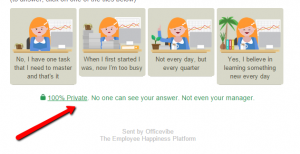Planning and goal-setting prior to implementation is key to success.
The status of marketing automation in martech stacks varies depending on the business. Some marketers are going into their second decade of automation, but may be considering moving to a different solution, while others involved in digital transformation to get started now. Regardless, of the level of expertise with automation, some universal best practices have to be implemented.
“A lot of the initial decision-making with automation lies with what channels are most important to your company, what resources you have and what is available to manage those channels, said Justin Sharaf, VP of Marketing at Jahia Solutions, during a recent episode of MarTech Live. “You may have marketing automation on three or four different platforms, but if you can’t stitch them together, you are not taking full advantage of your resources. Look at what technical resources you have available to stitch different platforms together.”
Planning for automation
“Automation can be a core function and be the brains [of the operation] or it can be the arm of a larger brain like a customer data platform,” said Sharaf. “Map out the customer experience first and figure out what you need to support that journey.”
Mapping out the customer journey is required before successful implementation of automation.
“You have to think about the customer experience you want to offer, more than just the tools you can use,” said Helen Abramova, marketing technology lead at Verizon i the same episode. “Goal-setting is also necessary in planning.”
Abramova warns marketers not to judge automation tools based on successes for failures of use by competitors in the same industry, or even by different divisions of the same corporate enterprise.
The most important goal of marketing automation implementation is to ensure the automation enhances the customer experience. Marketers also want to make sure increased automation does not decrease from efforts to measure touchpoint interactions.
“Automation is key for both database marketers and digital marketers,” said Suneel Grover, SAS marketing AI and decision science architect at MarTech. “Both can have high automation that increases efficiency and the customer experience at the same time.”
Timing of the task
Marketing automation as the foundation for marketing operations includes automation in campaigns, channels, engagement, promotions, sales and awareness outreach. However, the time required to implement marketing automation can vary from a few weeks to a few months. Mid-sized companies starting from scratch can expect the process to take one to three months. More complicated automation implementations can take from three to six months, while highly complex enterprise-wide automation implementations normally last between six months and one year.
“The complicated implementations have a lot of integrations, use multiple languages and have thousands of emails to automate,” said Abramova. “Make sure you are meeting your basic needs regardless of the size of the implementation.”
To make the process even more efficient, Abramova recommends marketing teams identify power users to help with automation implementation. Power users are stakeholders who understand the implementation from both macro and micro viewpoints, can comprehend data reports and easily identify inefficiencies in the automation process.
Analytics as an answer
For Grover and SAS, the ‘secret sauce’ of implementing automation is analytics, and in particular, an Analytic Base Table.
“An analytic base table is a combination of data attributes aggregated at the customer identity level that enable automated and customizable marketing AI,” said Grover.
An Analytic Base Table includes: milestones reached, number of conversions, number of visitors in the last three, seven and 14 days, average length of visit, counts of pages per category and search terms used.
“The best analytic results come with machine learning,” said Grover. “You have to keep analytics fresh with automatic [processes] for better automation.”
Integration with other systems
Integration issues have been minimized as major automation providers like Marketo and HubSpot have dramatically increased their integration capabilities in recent years.
“They now have new niche tools to build integrations themselves, because they have to, they had no choice based on demand,” said Sharaf. “Integrating marketing automation platforms are easier these days, but it is still all about the architecture, data placement rules and content integration.”
Abramova looks at automation implementation as a people-first process. “You need people, either internally or externally, who have [automation] experience,” she said. “No code or low-code integration really is not possible yet, so you need to rely on people who know what they are doing and have been there before.”
This story first appeared on MarTech Today.
Marketing Land – Internet Marketing News, Strategies & Tips
(20)







